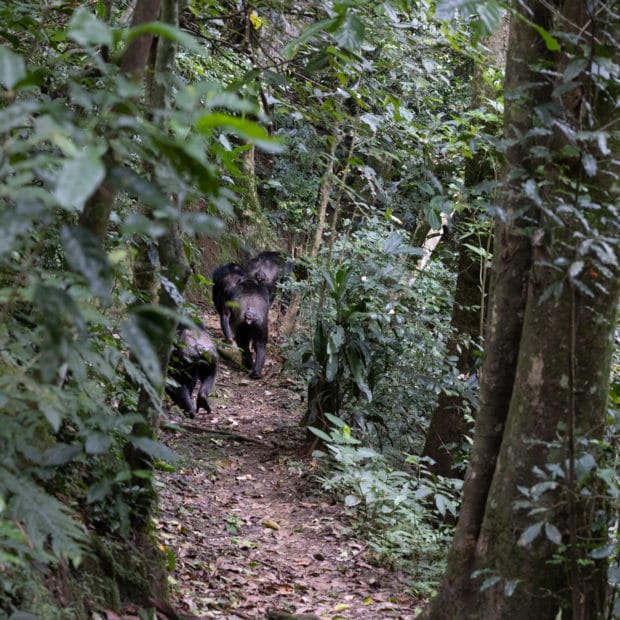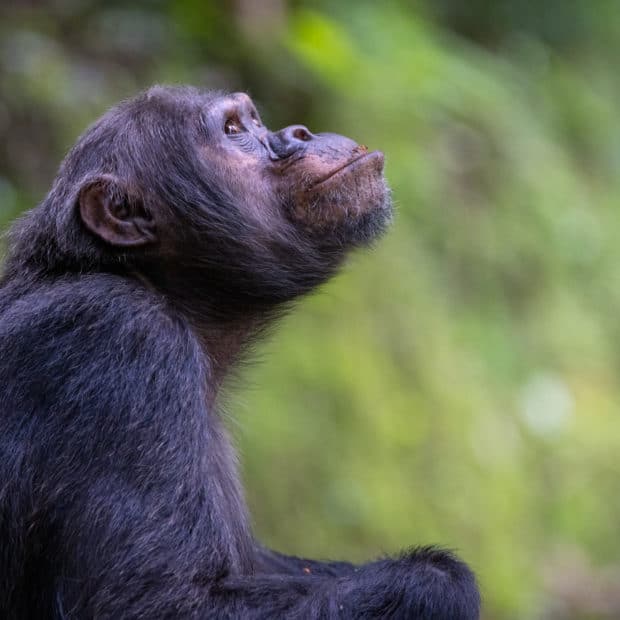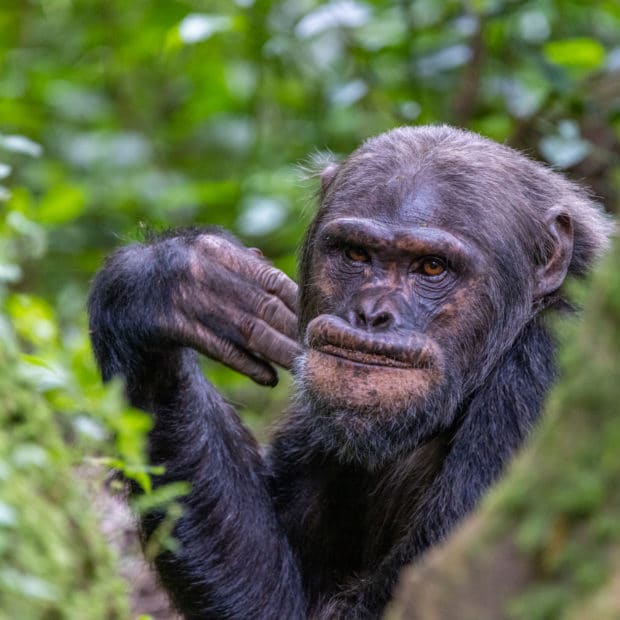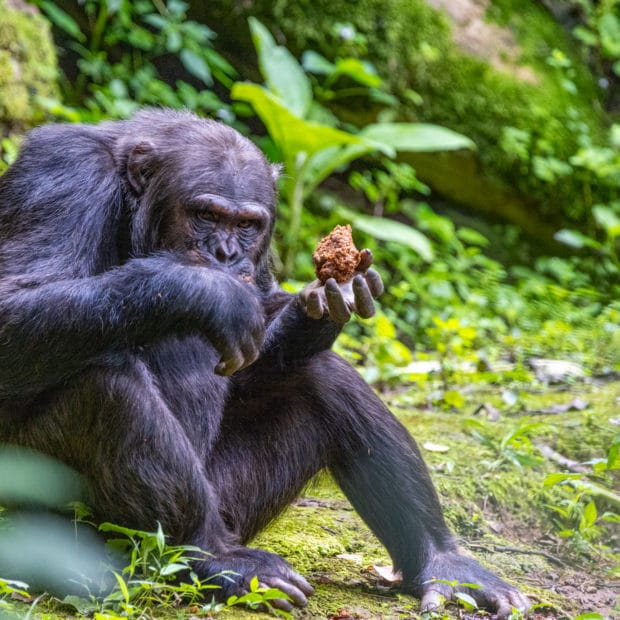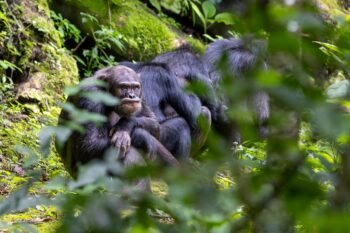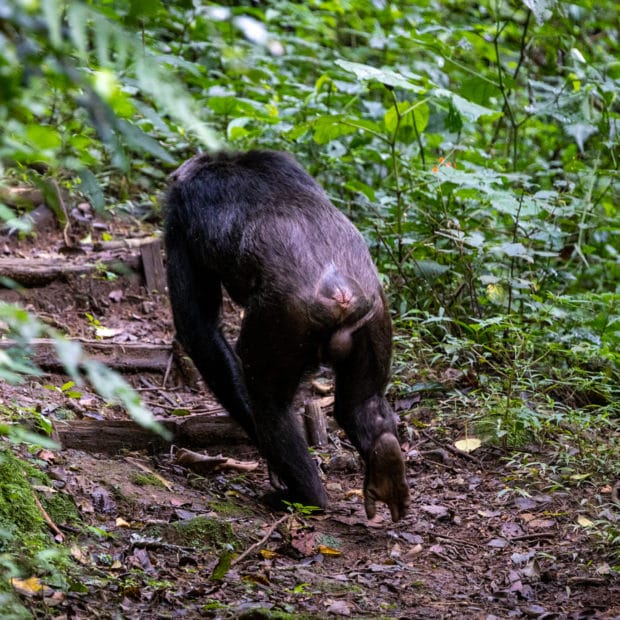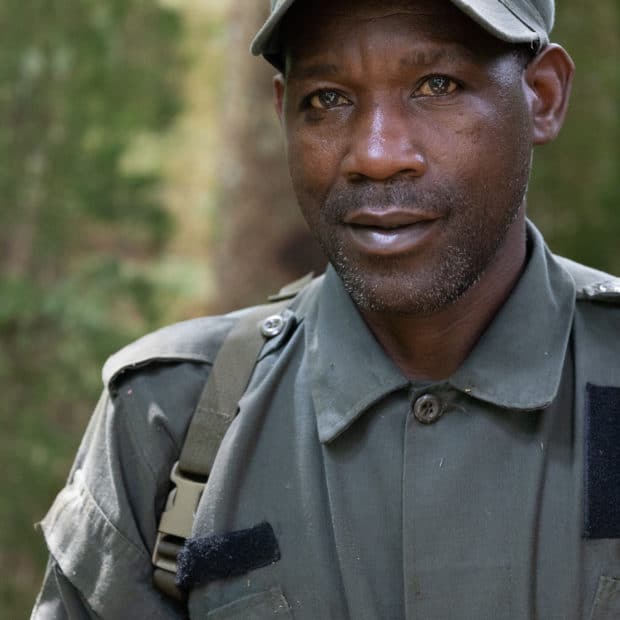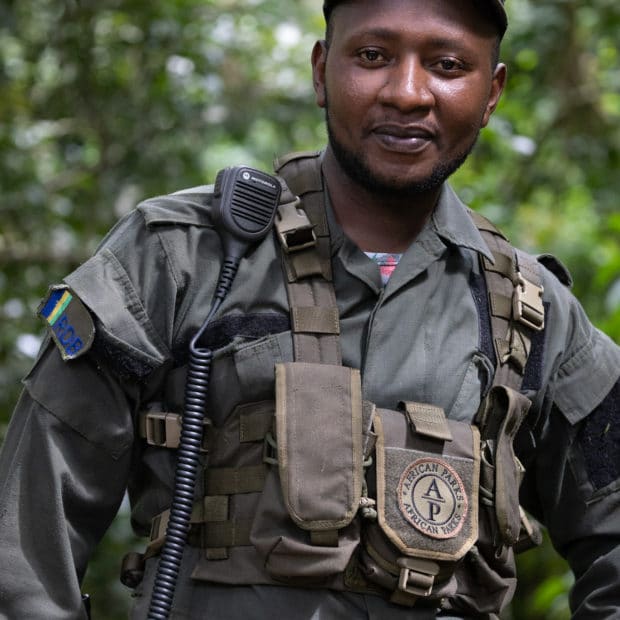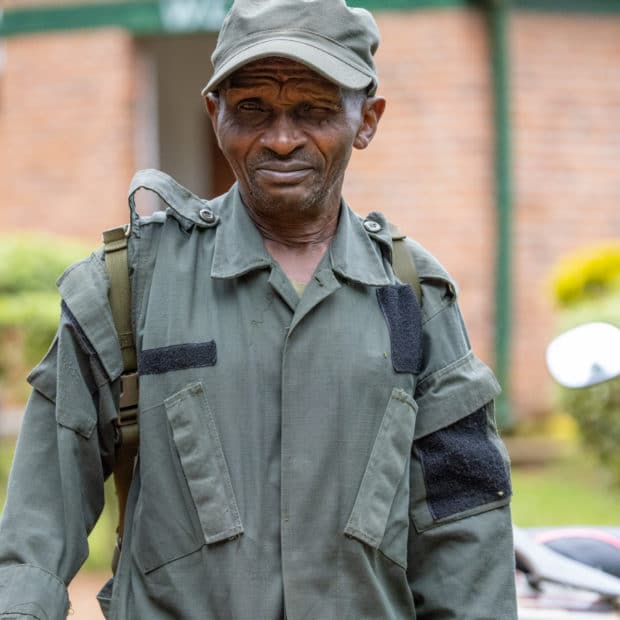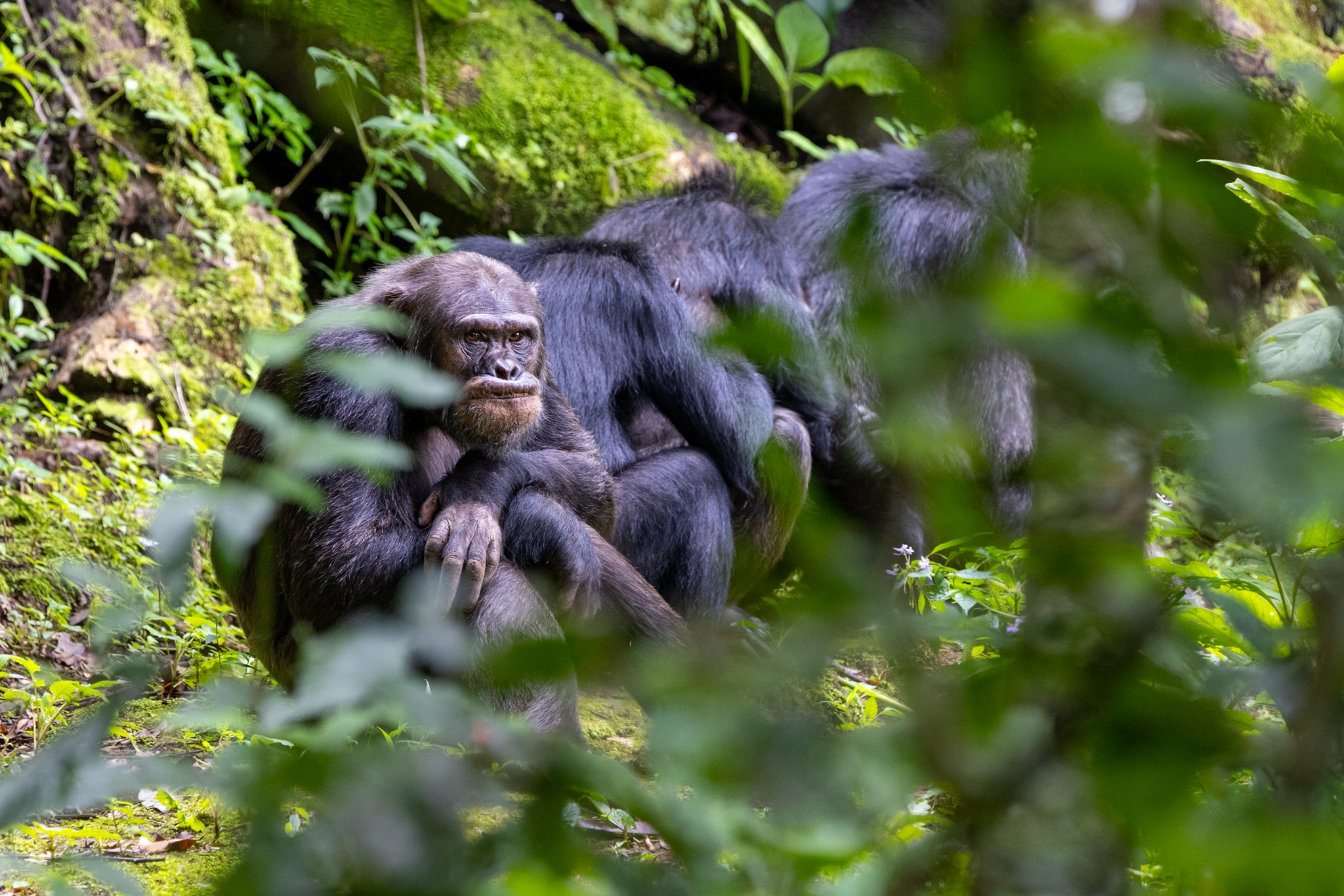
Have you ever wanted to spend time with chimpanzees in Africa? Wild, free to roam. This is as close as it gets to our ancient ancestors. I had to experience this for myself.
After spending a day in Kigali paying my respects to the victims of the 1994 Rwandan Genocide, we began our drive into the southern mountains. Once out of Kigali, traffic faded as the steady stream of produce and other market goods flowed back inward toward a growing urban population. Most of the land expanding away from the city is now cultivated for agriculture. The roads are quite beautiful as a passenger throughout the entire country. The traditional African safari massage does not exist here. Foreign investment has become more consistent in the last few years. One country’s grip on the region is quite noticeable as it secures its bid for the resources available in these developing African nations. Only time will tell if this relationship is truly mutually beneficial. Not only is Rwanda beautiful, but is also spotless. Every last Saturday of the month, all the people of Rwanda flood the outdoors in a community effort to clean, perform maintenance, and socialize. Can you imagine what our own communities would be like if we participated in such an event?
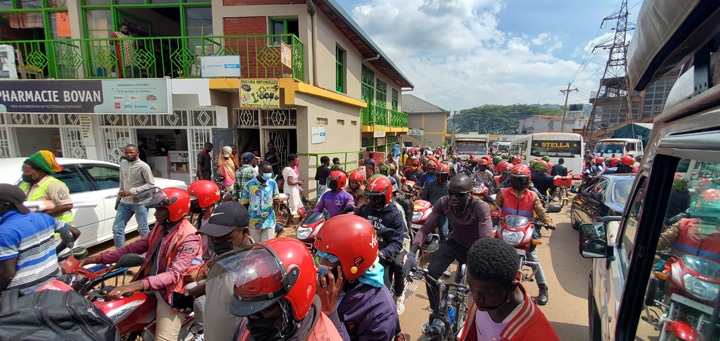
As we drove deeper into the mountains, the agriculture turned from traditional crops to tea plantations. Then, the plantations hit a hard stop as we finally entered the protected forest. Similar to my time in Malaysian Borneo, you have to drive hours to finally arrive at a protected forest. It’s the harsh reality of our planet’s present state. Certain resources are deemed more valuable than others, and with the amount of mouths to feed, food production is top of the list.
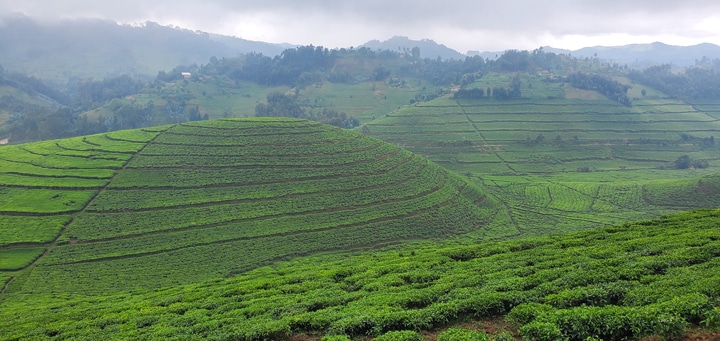
The forest was quite lush. A dense fog covered the canopy. The air was cool, damp, and still. While in the proximity to villages, the smell of musty, slow-burning wood lingers throughout the air. Inside the forest, however, the air turns sweet. Delicate. The kind of air so pure you just want to stop the car, get out, and take as deep a breath as possible. You can almost taste the sweetness on your lips.
Simultaneously, as we entered the deep forest, we also encountered the patrolling Rwandan military. I would not be bold enough to say this region is a conflict zone but there is still conflict taking place. We passed a DRC refugee camp established years ago, now still home to hundreds if not thousands of people. This steady stream of soldiers stayed with us for about 25 miles until we reached Cyangugu, near the border of the DRC. Each of us called it an early night before our long day of tracking chimpanzees.
Zap! The alarm goes off like a bolt to the brain. It’s 4 am and it’s time to load the jeep. In the pitch-black morning, we said goodbye to our nicely paved roads for the comfort of winding gravel. Approximately an hour passed as we climbed slowly up the rouged slopes, passing nothing but hillside after hillside of tea plantations all the way from the main road up to the forest edge. These hills looked gorgeous in the morning light, but once you see past their beauty, you know they are a sad reminder of what once covered these slopes. Rainforest.
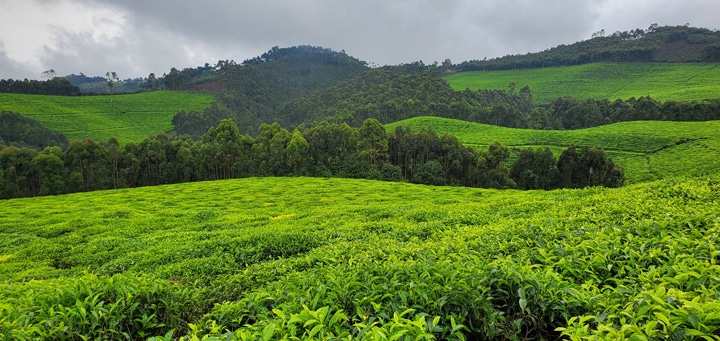
Finally, we reached the entrance to the park- Nyungwe Forest National Park. Rangers met us for the morning briefing. They gave us expectations on what the day would look like as well as instructions on how to behave around the chimpanzees. We loaded back into our jeep for a short ride to a drop-off point. Surrounded by towering trees, calls by resident hornbills echoed through the jungle. I so badly wanted to linger taking photos of these beautiful birds, but time was against us.
Three of us from our group separated into a “fast” group with hopes of quickly picking up the chimps’ trail. Unlike my previous experience with gorillas, these primates move and they move fast. We bolted through the jungle at a ferocious pace. Slashing vines and struggling not to fall from the steep slopes covered in decomposing wet leaves. After about 20 minutes of getting our asses kicked by the jungle, we finally arrived to meet a small group. Unfortunately, they wanted nothing to do with us, and they disappeared down a valley, covering a mile within just a few minutes. I was astounded just how quickly they could move through the forest. We were struggling so badly, and they made it look effortless. Not to worry, we caught up with them eventually.
We pulled ourselves together and made our way back to the only trail through the steep terrain. For the next hour, we scampered up and down and up and down the mountain ridges underneath the thick forest canopy. Our clothes were drenched in sweat. Boots were devoured in mud. My camera bag was about 40lbs full of gear and glass. I was glad the previous six weeks I spent training inside my new gym. I really don’t want to imagine what my legs would have felt like without that training.
No matter what the situation, I was going to press on to find these animals. Even if I had to separate from my group and meet up with them later that night, nothing was going to stop me. I felt compelled to tell their story. This particular community has been cut off from the rest of their family forest due to habitat loss from deforestation, despite being in a “protected” forest. If you look at a satellite view of Nyungwe Forest National Park, you will see just how small this forest is compared to the rest of the development in the region. To know that not even being given the “protected” tag could save these forests from the same fate the miles of tea plantations saw previously really broke my heart. It motivates me to share their story. Be their voice.
Our lead ranger’s radio buzzed that two adult chimpanzees had been spotted in the canopy not too far off the trail but on a very steep mountain edge. Based on the elevation, they thought with our gear, we would be able to get a few nice images of them. One nerve-racking step after another, not knowing if the earth was going to support my weight or not, I made my way down to the spotter. Sure enough, two beautiful chimpanzees were engaging in a social grooming session. From the pictures, one looks to be male (the one being groomed) and the other female. Grooming is such an important social activity amongst chimpanzees. I awkwardly balanced myself against neighboring trees to help stabilize me, keep the camera steady, and have something to fall into if I did go down.
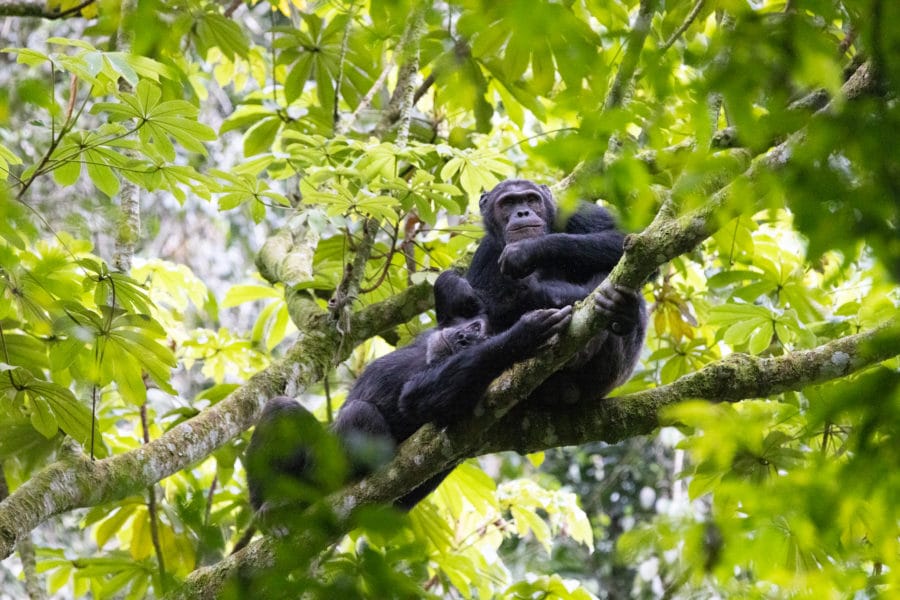
For about 5 minutes, the two ignored our presence. It looked just like I had seen in the documentaries. Just beautiful to have it unfolding right in front of my eyes. There is so much we can learn from them. Then, one after the other, they shimmied down an ancient tree and disappeared off into the jungle once again. If that had been my only encounter, I would have been satisfied. Photographing wild animals can be so unpredictable and unforgiving. Seeing them at all was a true blessing.

We pulled ourselves back out of the thick undergrowth, mud, and vines. Regrouped with those who could not attempt the steep slope for photos and continued down the path, hoping to meet up with the family once again. Thankfully, our exit was in the same direction our chimpanzee family was heading because the real magic was about to happen.
A ranger’s radio buzzed again. He was notified the chimpanzees had come down out of the canopy to forage along our path. Not wasting a second, we quickened our pace, trekking single file to reach them in time but not to scare them off. Four of them! Sitting in a row. Checking us out, but preoccupied with lunch. I quickly adjusted all my camera settings to fit the scene. There was no way I was going to make the mistake of not getting clear, sharp images. It’s one thing to worry about composition while frantically trying to capture wild animals, it’s another to make sure the settings are correct. Too often, what one sees on the back of the camera (myself included) is not what we see full-size on a computer screen or print.
I am a firm believer that to be safe, wildlife should be photographed at 1/1500 second or faster to freeze the frame. To me, it doesn’t matter how high I have to crank up the ISO in the camera or how much depth of field I have to give up to achieve a sharp image. No parasite or virus could make me more ill than walking away from an experience like this with a memory card full of “almost” images. I wanted the shot. One that belongs in a magazine or in a museum. Something to be proud of. Something to tell their story.
All of these images came from about a quick 2-minute window. The group was still very much on the move and was about to disappear back up into the canopy. All the members moved forward up the path, except for one. This one sat quietly. Staring off into the distance as if it were lost in a daydream. Maybe I was just hypnotized by something I couldn’t see. I could see it come back out of its trance, and just like that, it took off after the group. Thankfully for us, the group was staying local this time. I managed to snag a few more images before the time ran out on our day.
What came next is the moment that I’m sure will stick with me forever. I was making my way back to the trail when a large female chimpanzee caught my eye only 8 feet from me. She had been quietly observing us while we were distracted by the other members of her family above. Too close for my current camera setup, I just put it all down. I became just an observer for a few minutes. She curiously looked me up and down. I brought myself down to her level, sitting on the damp forest floor. Her eyes moved back and forth as she investigated all that I was just as I did to her. I impulsively wanted to talk to her. Ask her questions. Even though I knew she would not be able to answer, something inside me want to communicate. I really can’t describe what that sensation was like. It was simply beautiful. Before heading out, I changed lenses, snapped a few images of her, then left the family to continue on with their day.
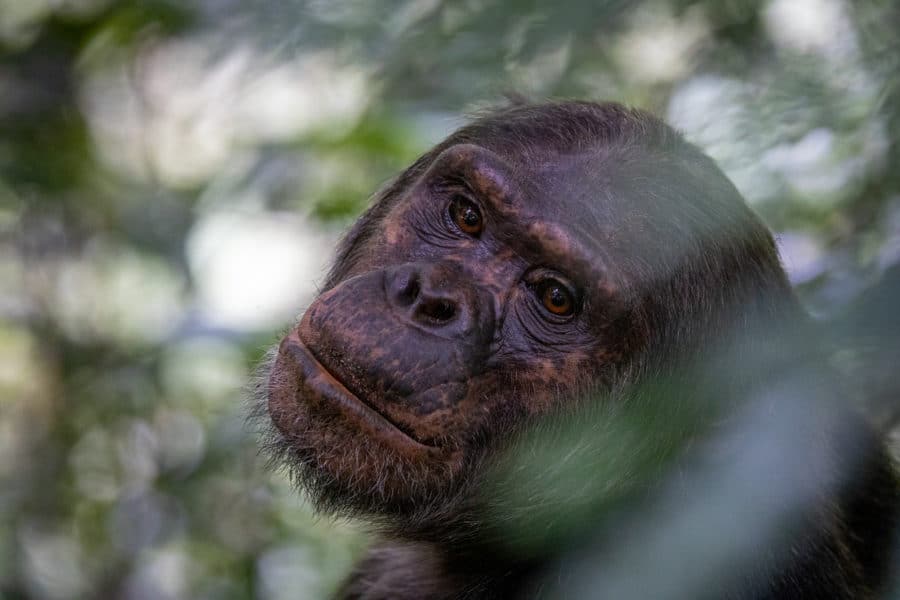
I’m not shy to admit these close, intense encounters move me to emotion. Making such a connection with nature is my version of religion. This is my holy place. People cry when they see the Pope or even the Beatles. For me, I get taken to that space inside of the most raw, beautiful moments in nature. No tears this time, but a vibration worked its way across every nerve in my body. Not one cell was left unaffected by my experience.
I want to take a moment to thank all the brave, courageous rangers and park staff who risk their lives every day to protect these beautiful wild animals. Without the sacrifices these women, men, and their families make, these irreplaceable resources may be gone forever.
Just like all my animal images across Africa, these images will be sold to support Dr. Gabby Wild and the Dr. Gabby Wild Foundation in their fight to save and protect wildlife. It is a simple way I can give back to these places that have given me so much. My heart breaks, not knowing if by the time I return to this forest if anything will be left. Will the agricultural pressure overtake this fragile, sacred forest? Or…will the government step up and put in the same effort used to save the famous mountain gorillas of the north? For more stories of my work in the field or articles about luxury fine art photography, please visit the rest of our news section. To stay up to date with current events, join our newsletter for exclusive behind-the-scenes content. Thank you for your interest in my work. It is through our combined efforts we can make a lasting impact on this beautiful planet for all its diverse species.
Written By – Derek Nielsen
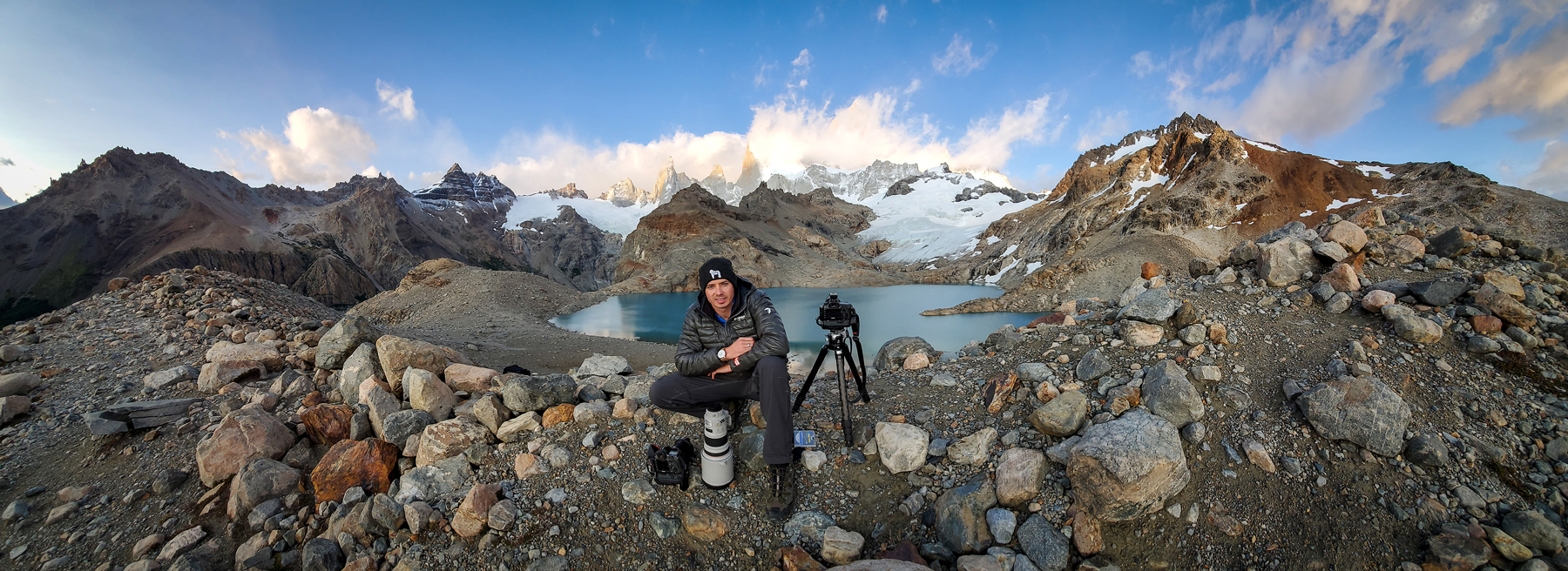
Hello! I'm Derek.
DEREK NIELSEN PHOTOGRAPHY RAISES AWARENESS ABOUT THE GLOBAL NEED FOR CONSERVATION THROUGH PHOTOGRAPHY AND DONATES UP TO 15% OF ALL SALES BACK TO ENVIRONMENTAL ORGANIZATIONS AROUND THE WORLD.

